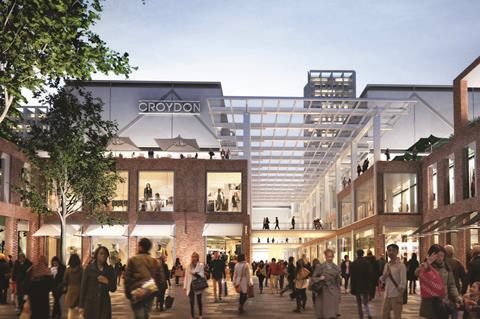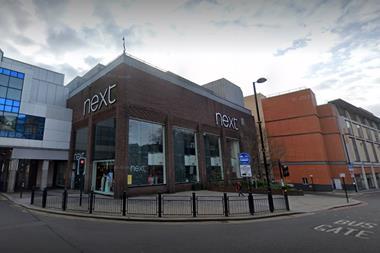It is a decade since the Tottenham riots took place, prompting the report by a task force led by Sir Stuart Lipton, which secured substantial public investment in the neglected, once-proud London borough.

In the years since, the development highlight has been the magnificent Spurs stadium designed by Populous, but there has also been some decent residential development and general environmental improvements.
Things came to a grinding halt after the last council elections won by a Corbyn-esque gang who ripped up a major housing programme to have been developed by the local authority in conjunction with Lendlease, but we live in hope.
Personally, I was very disappointed to see the recently announced abandonment of the Grainger mixed-use development around Seven Sisters tube station, the so-called ‘Ward’s Corner’ site – that being the name of a local department store that closed in the early 1970s, but is still referred to by some as though it is part of Tottenham’s living heritage.
The Grainger story is instructive, because it shows how if you delay long enough, you will find an increasing number of reasons for not doing the development because so much else has moved on. The proposal, for several hundred apartments and houses, plus replacement retail facilities for traders operating on licences (not leases) in the existing buildings, finally won planning permission after Lipton’s task force supported a revised and very decent design by Pollard Thomas Edwards.

It fell to me to give a statement of support at a one-subject meeting of Haringey’s planning subcommittee. So many people wished to speak, many opposed to the scheme, that I only made my statement at 11.30pm, shortly before the last tube back to central London. Only the next morning did I learn that the subcommittee had approved the application at 20 minutes after midnight.
Too much to bear
Unscrupulous Lib Dems did their usual trick of trying to use judicial review to void the permission, a tactic that had succeeded on previous occasions where the number of languages in which the planning application had been translated was said to be inadequate.
This time it didn’t work, but a combination in succeeding years of continuing amenity group hostility, a mendacious campaign by Latin America traders and general cyclic economic woes, plus Covid, changes in planning policies and building regulations, has proved too much for Grainger to bear, and who can blame them? I simply note the number of lost housing years, and wonder whether we will ever be able to supply the new homes London so badly needs.
In general, procrastination is the enemy of housing, but occasionally that delay may have some benefits. Take another abandoned London project: Croydon town centre. Not so long ago, Westfield and Hammerson joined forces in a rational response to the prospect of two rival schemes taking place next door to each other. Boris Johnson praised the subsequent masterplan to revive the whole of the town centre, triggering new housing as a benefit, and referred in a witty Mipim speech to the alliance as an example of West Ham coming to south-west London…
That was then; today the proposal (pictured) lies in tatters, rather like Croydon council itself, once a byword for progressive planning and development but now apparently incapable of keeping even the Fairfield Halls in proper running order. Brick By Brick, its attempt to prove that a council-owned ‘company’ is better at housebuilding than the private sector, has collapsed in metaphorical ruins, whatever claims are being made about how it was all going to work out well in the end. Tell it to the marines!
Croydon previously wasted 10 years trying to defeat the owners of the site next to East Croydon station by backing a rival scheme, with the rival schemes both taking space on the London Stand at Mipim – a surreal exercise that could only end one way, with the people controlling the site doing the development.
One must have sympathy for the council in respect of the town centre abandonment, however, since it has tried to keep things going throughout. What has changed is the retail environment. Imagine if a gigantic centre was about to complete today: how many tenants would it attract in the new world of online retail?
Time for a rethink, and indeed a rethink about all our retail-based town centres. Much time and energy is being expended on this, but one strategy looks like a winner: repopulate centres with more residential. This is part of the thinking behind the continuing move to PDR, so hated by planners suddenly in love with commercial property.
This one will run and run – with changing contexts and policies along the way. One can only hope that procrastination will – if this does not sound too odd – be constructive.
Paul Finch is programme director of the World Architecture Festival






























No comments yet